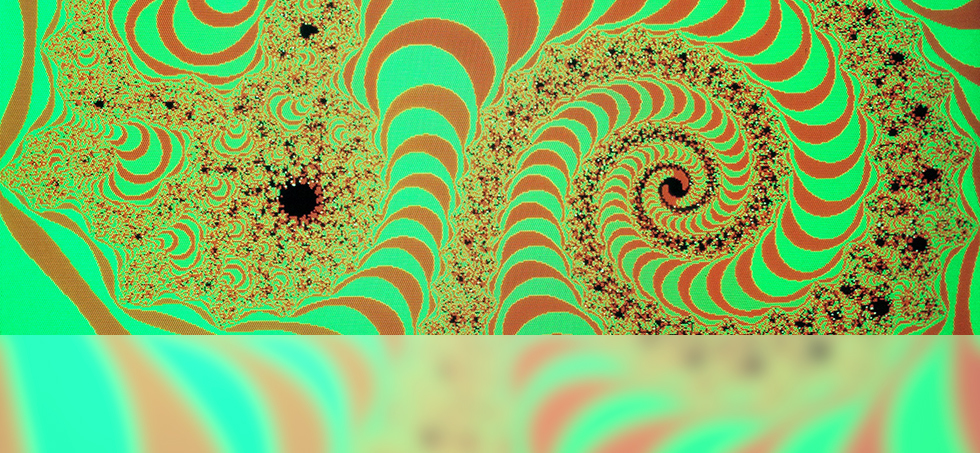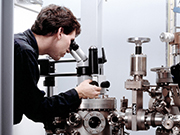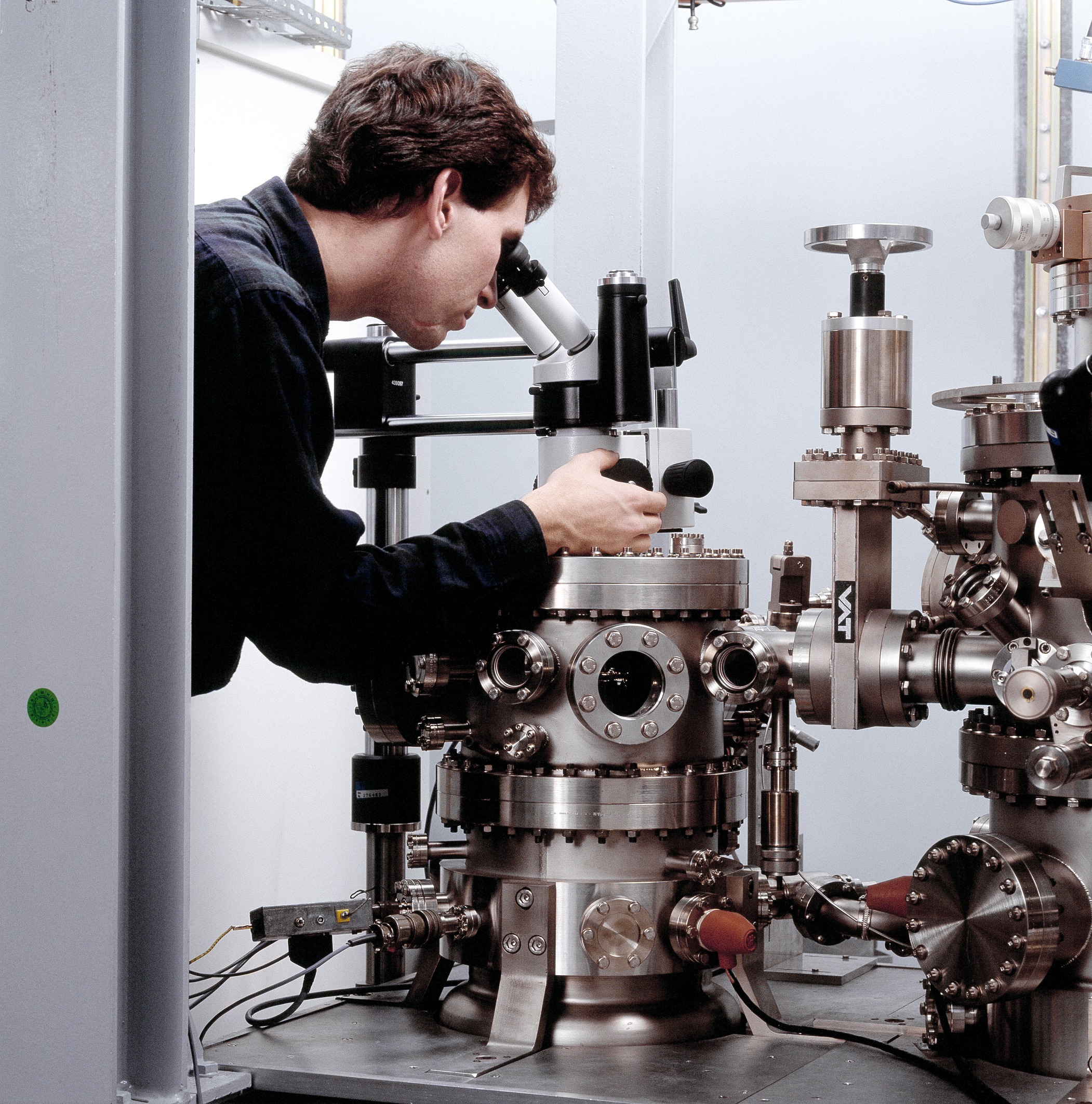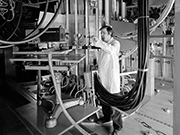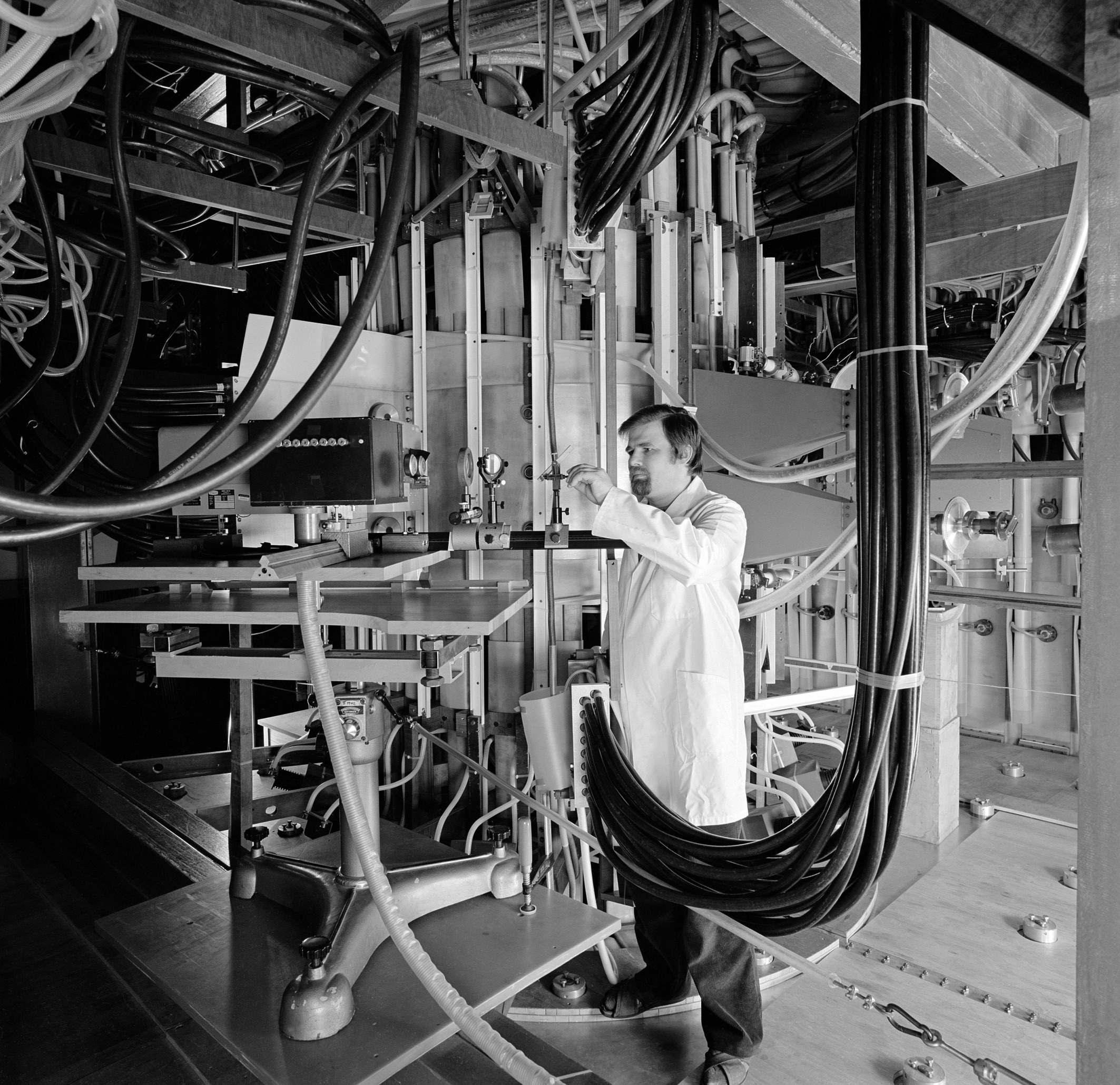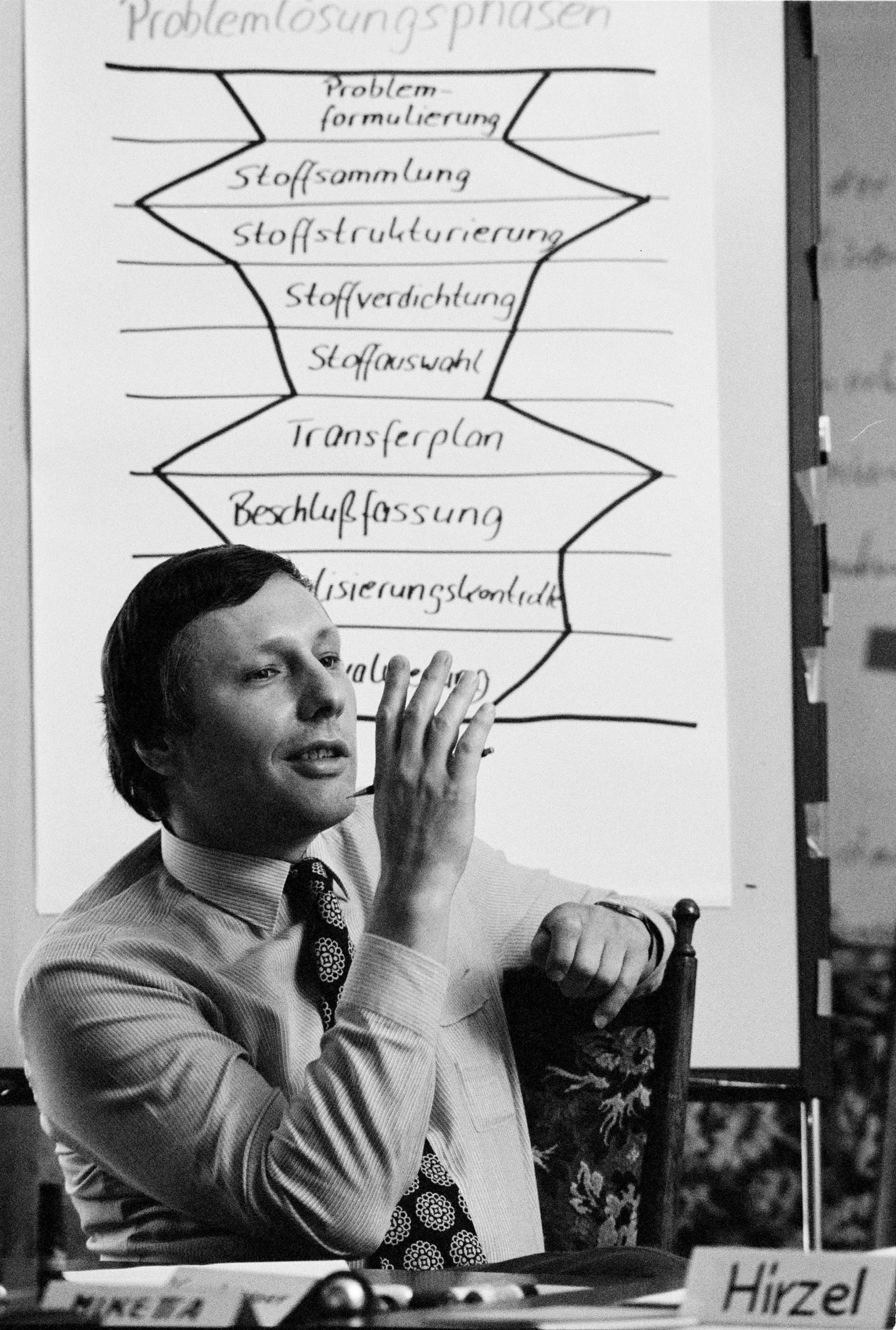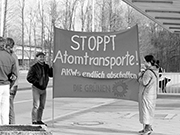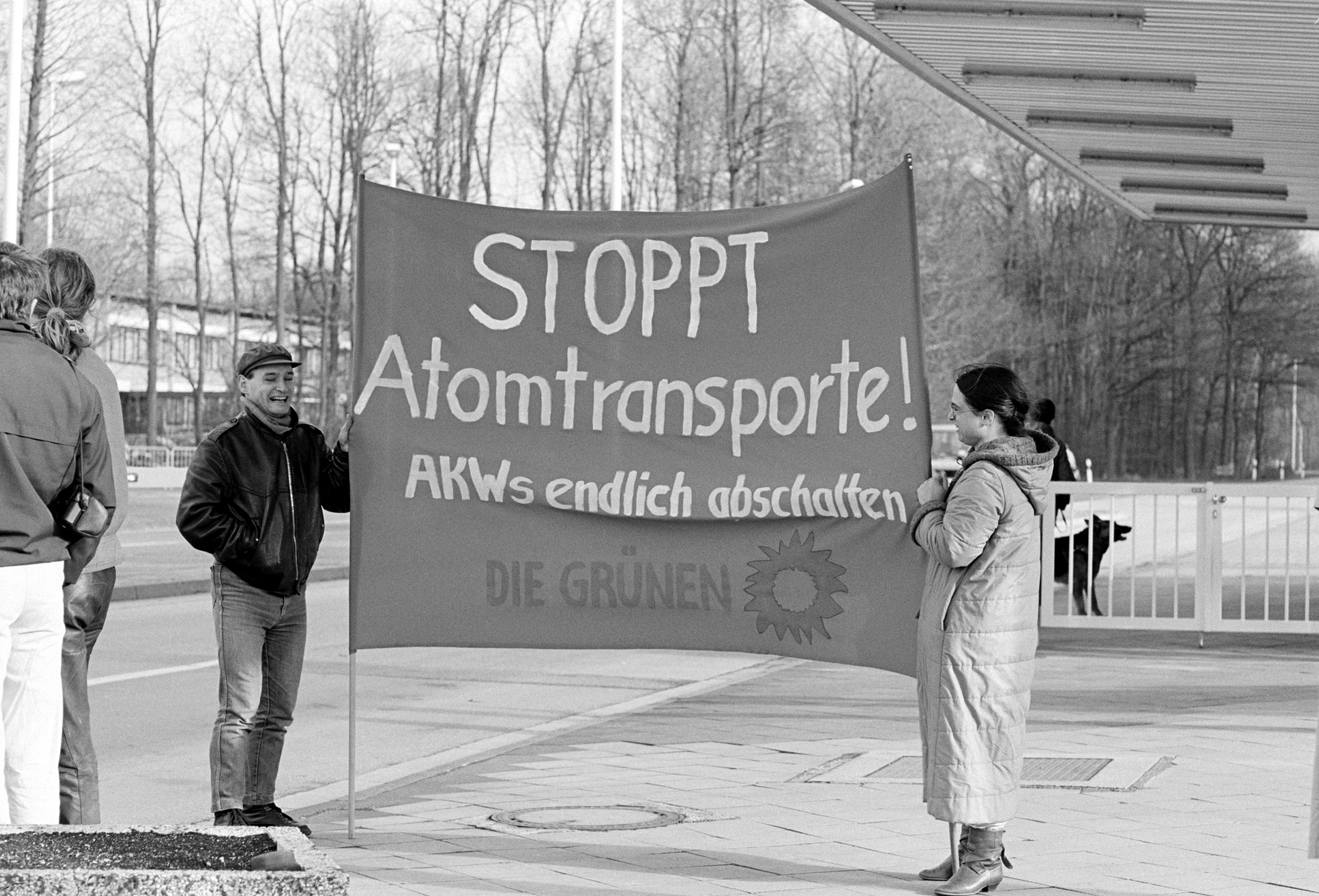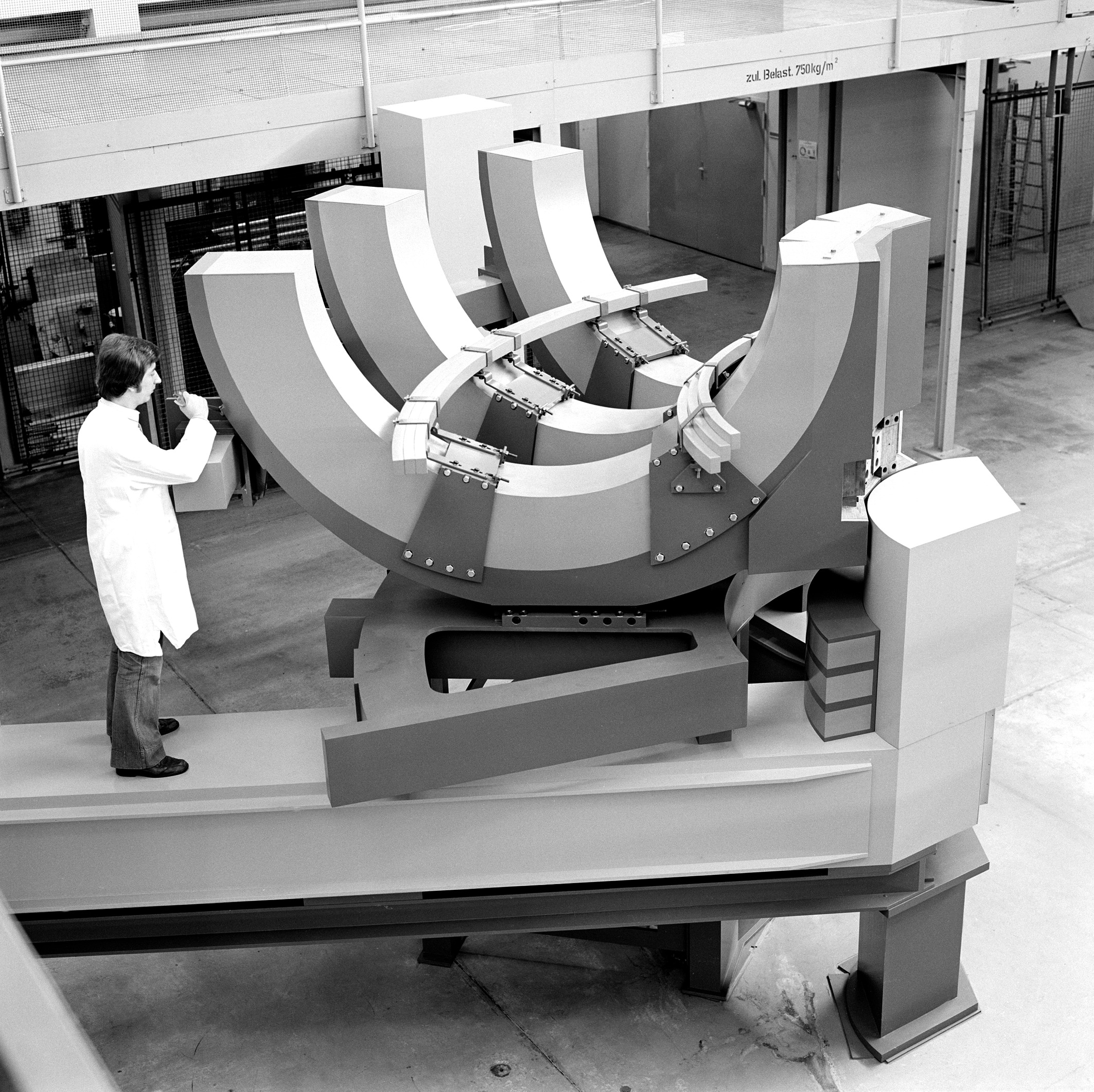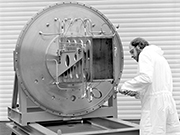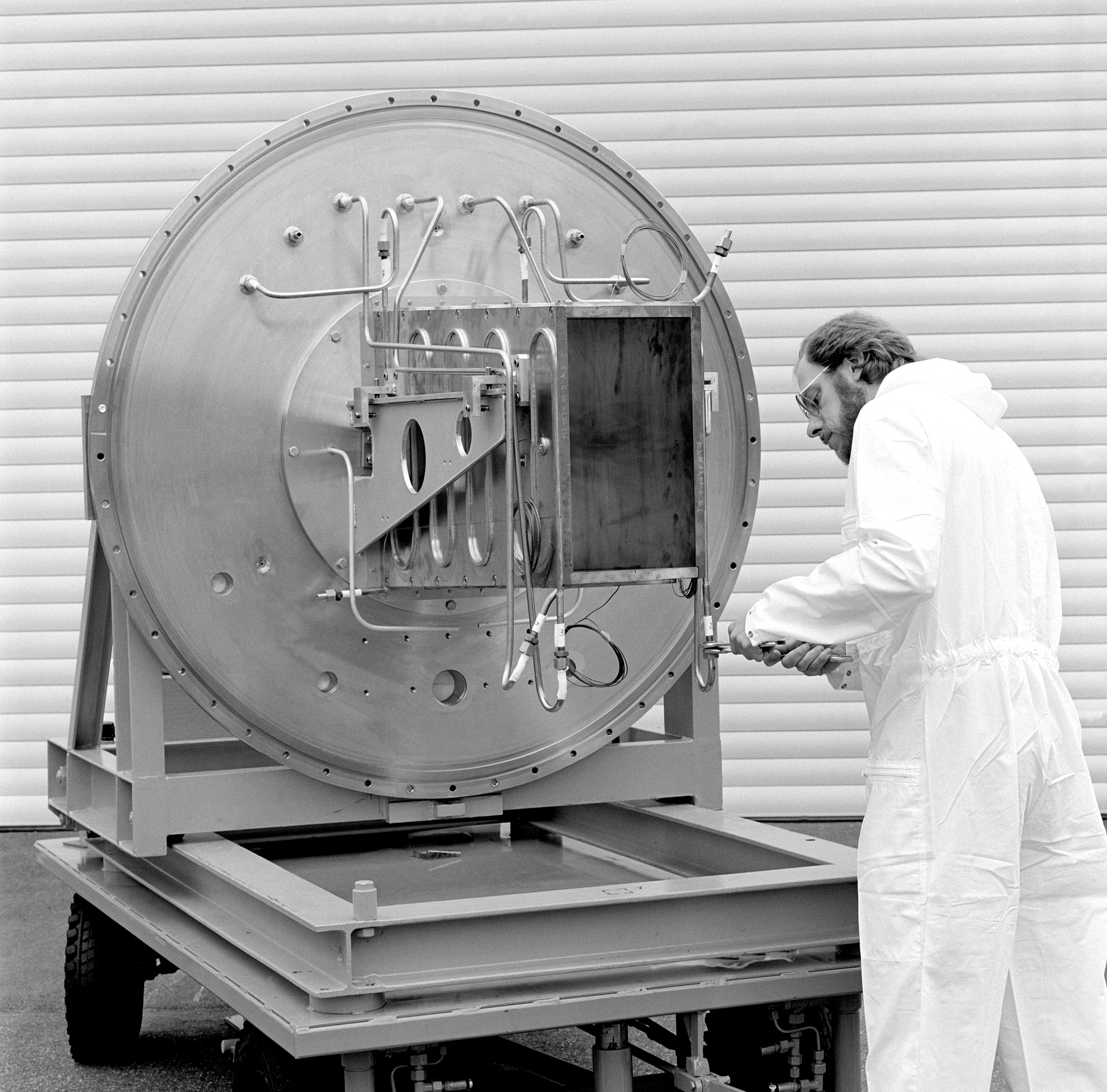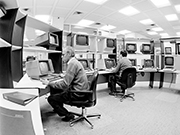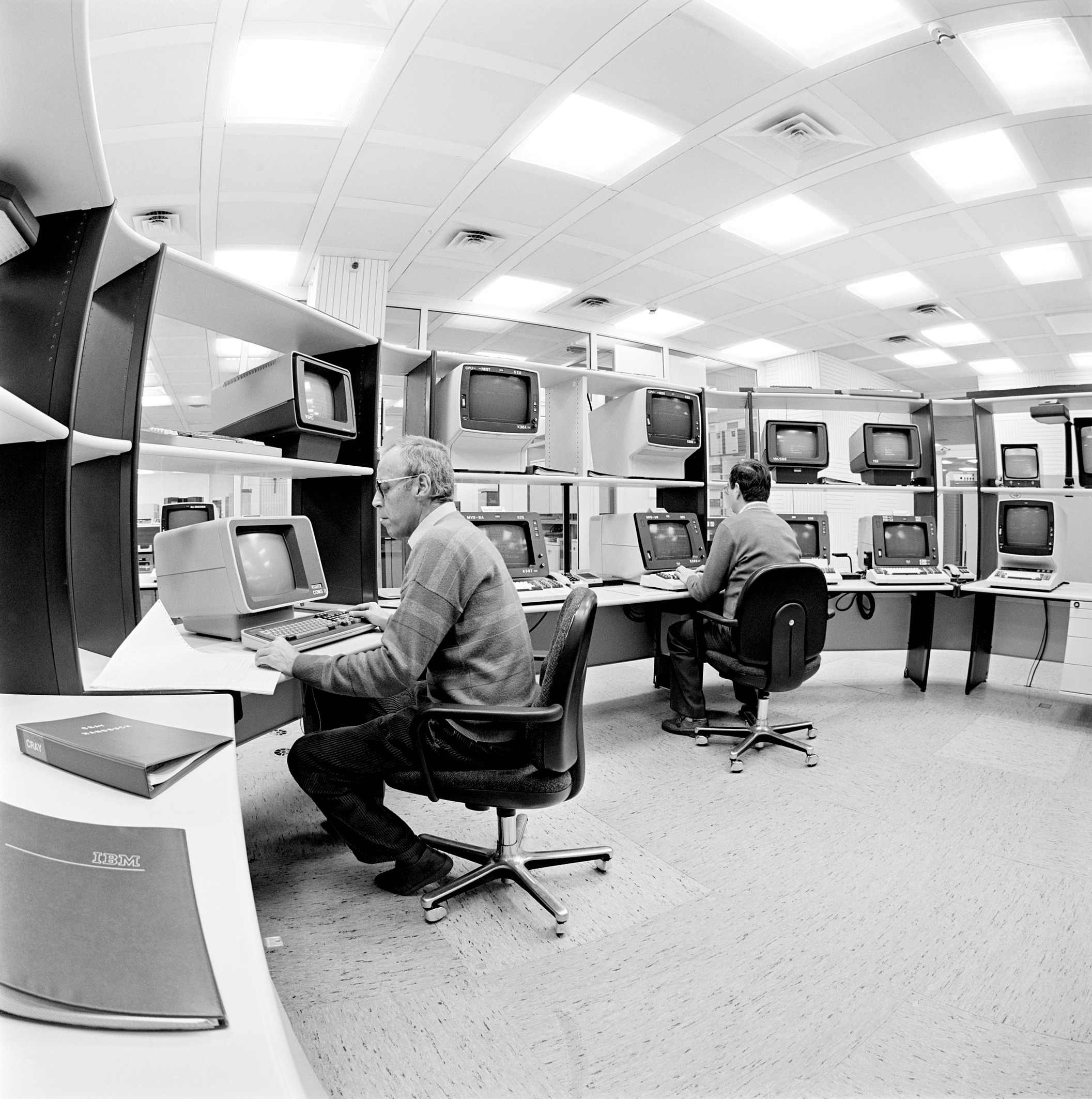A new buzzword heralded a fresh approach: “systems analysis” involved bringing together results from projects and working groups so that findings could be classified, understood, and evaluated in complex contexts. A pioneer in this field was the Systems Analysis and Technological Evaluation programme group. Environmental and climate research in particular required energy, climate, technology, and society to be considered in terms of their interrelationships and interactions.
Results from nuclear research became the starting point for new technologies. Thus, Jülich's radiochemistry department specialized in pharmaceutical applications and developed tracers that made metabolic processes in the brain visible. The Institute of Reactor Materials, which came into existence in the 1960s, worked on ultra-high-temperature ceramic materials of substantial interest to industry.
With large-scale facilities such as TEXTOR and supercomputers, Jülich underlined its status as a major research centre: large scientific and technical infrastructures were developed and built for a variety of research areas, and methods for their operation were created and made available to the community.
New horizons
The anti-nuclear and environmental movements gave rise to many questions in the 1980s. While nuclear energy attracted increasing criticism, in particular following the Chernobyl disaster in 1986, getting to grips with environmental problems became more and more important. Research responded to the new questions coming from society and taken up by politicians, and investigated a large number of new fields. These included information technology, materials research, and biotechnology. At the same time, the major research institutions also regarded themselves as partners in terms of scientific policy and started to play a more active role in determining the strategic direction of research.
An agreement on scientific and technical cooperation between West and East Germany in 1987 encouraged relations between their respective research institutions. So when the inner-German border was opened in 1989, these contacts soon grew into straightforward cooperations; Project Management Jülich (PtJ) became active in the former East Germany as soon as the Wall came down, placing and coordinating a number of environmental projects in particular. It therefore became indirectly involved in reshaping science in what had been East Germany.
Dates
| 1981 | TEXTOR, the large-scale fusion experiment based in Jülich, comes on stream |
| 1982 | Molecular beam epitaxy plant for investigating semiconductor and magnetic film structures |
| 1984 | Inauguration of supercomputer CRAY X-MP, one of the world’s fastest computers |
| 1985 | The MERLIN (FRJ-1) research reactor is decommissioned |
| 1987 | The High Performance Computing Centre (Höchstleistungsrechenzentrum, HLRZ) is founded |
| 1988 | Official opening of the pilot-scale bioengineering facility for obtaining enzymes from micro-organisms |
| 1988 | The AVR reactor is shut down |
| 1988 | Peter Grünberg discovers the GMR effect, for which he is awarded the Nobel Prize in 2007 |
| 1989 | New European record: a high-temperature superconductor developed in Jülich conducts electric current at 130 kelvin |
| 1990 | Change of name to Forschungszentrum Jülich |


